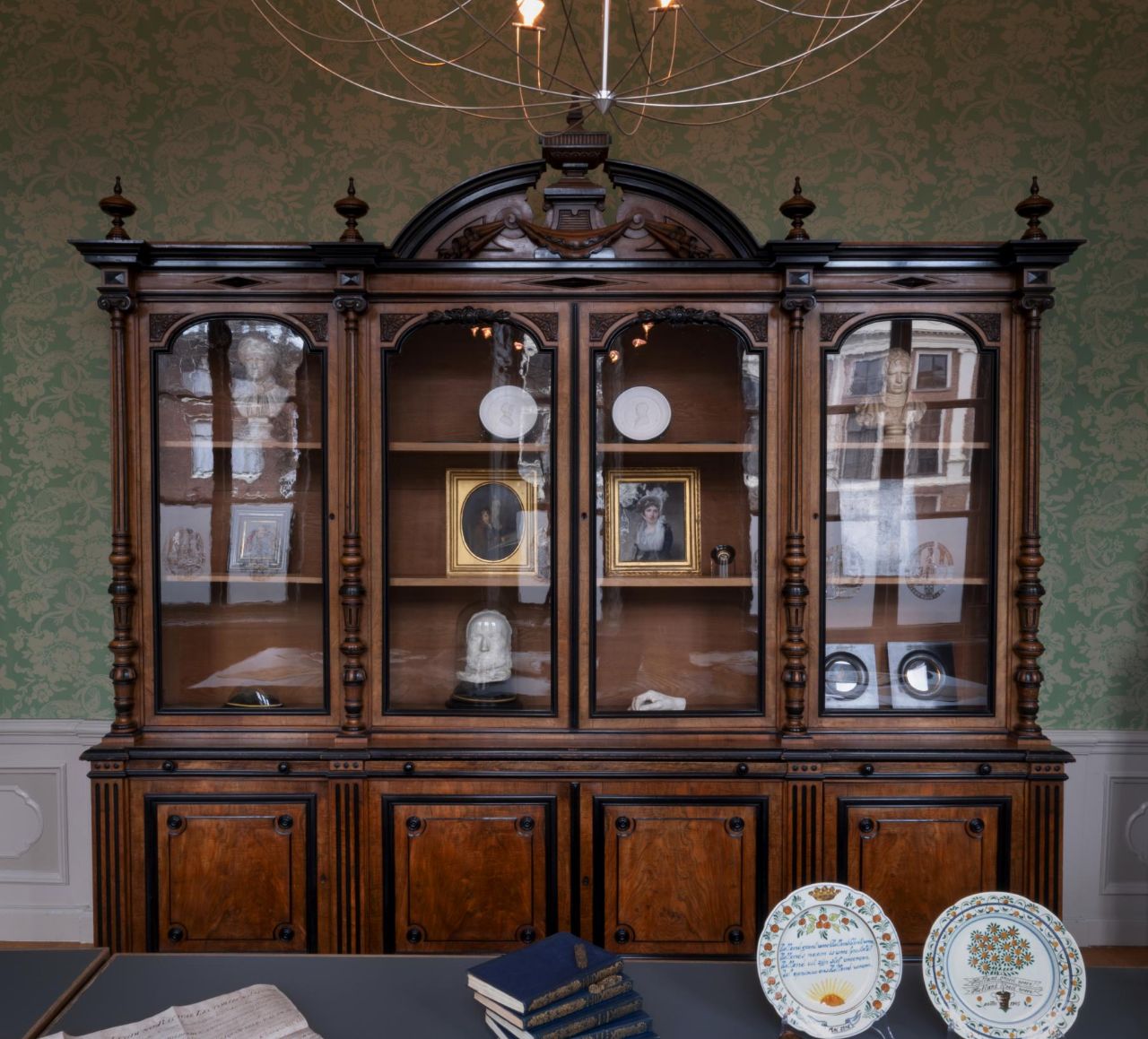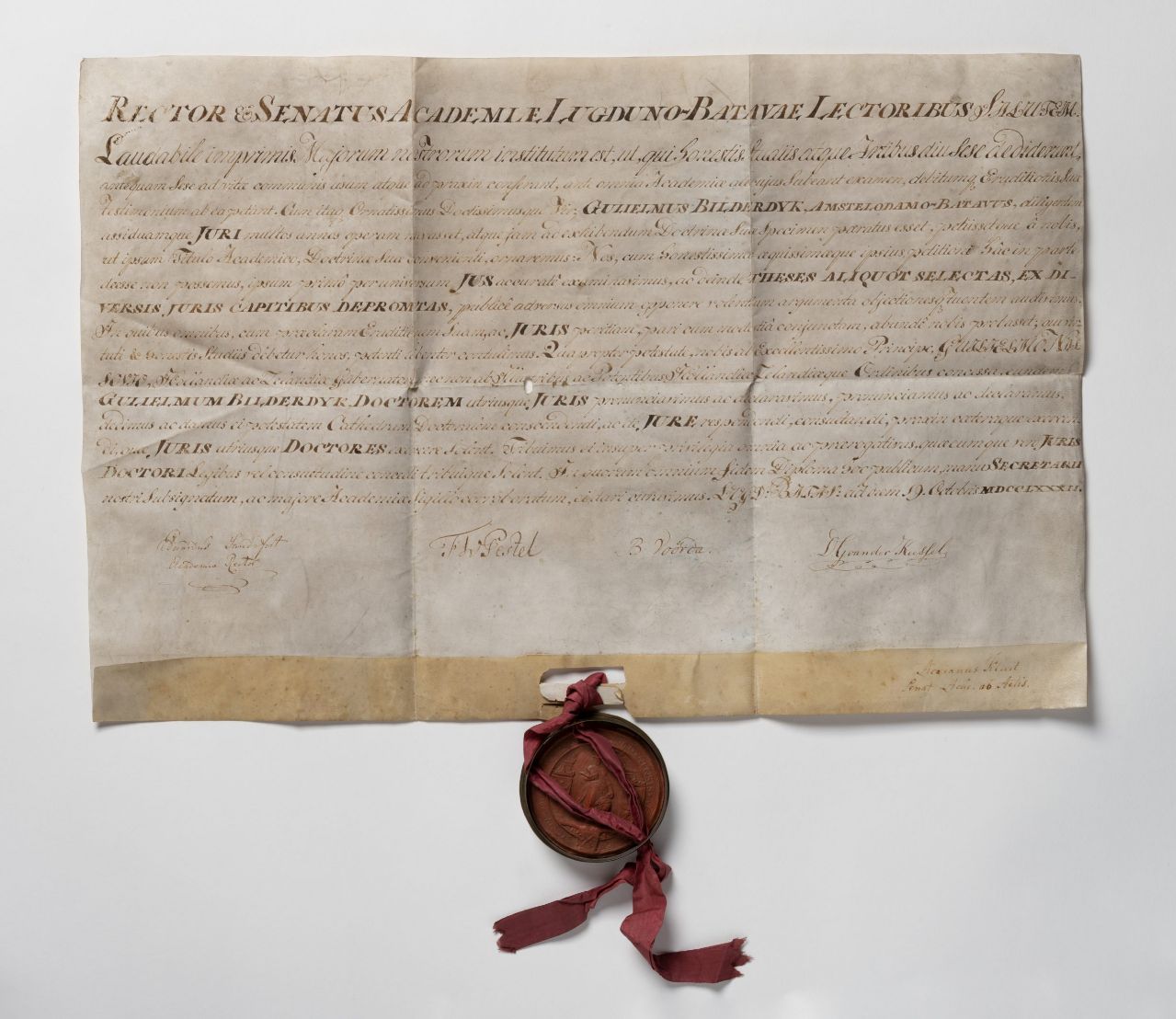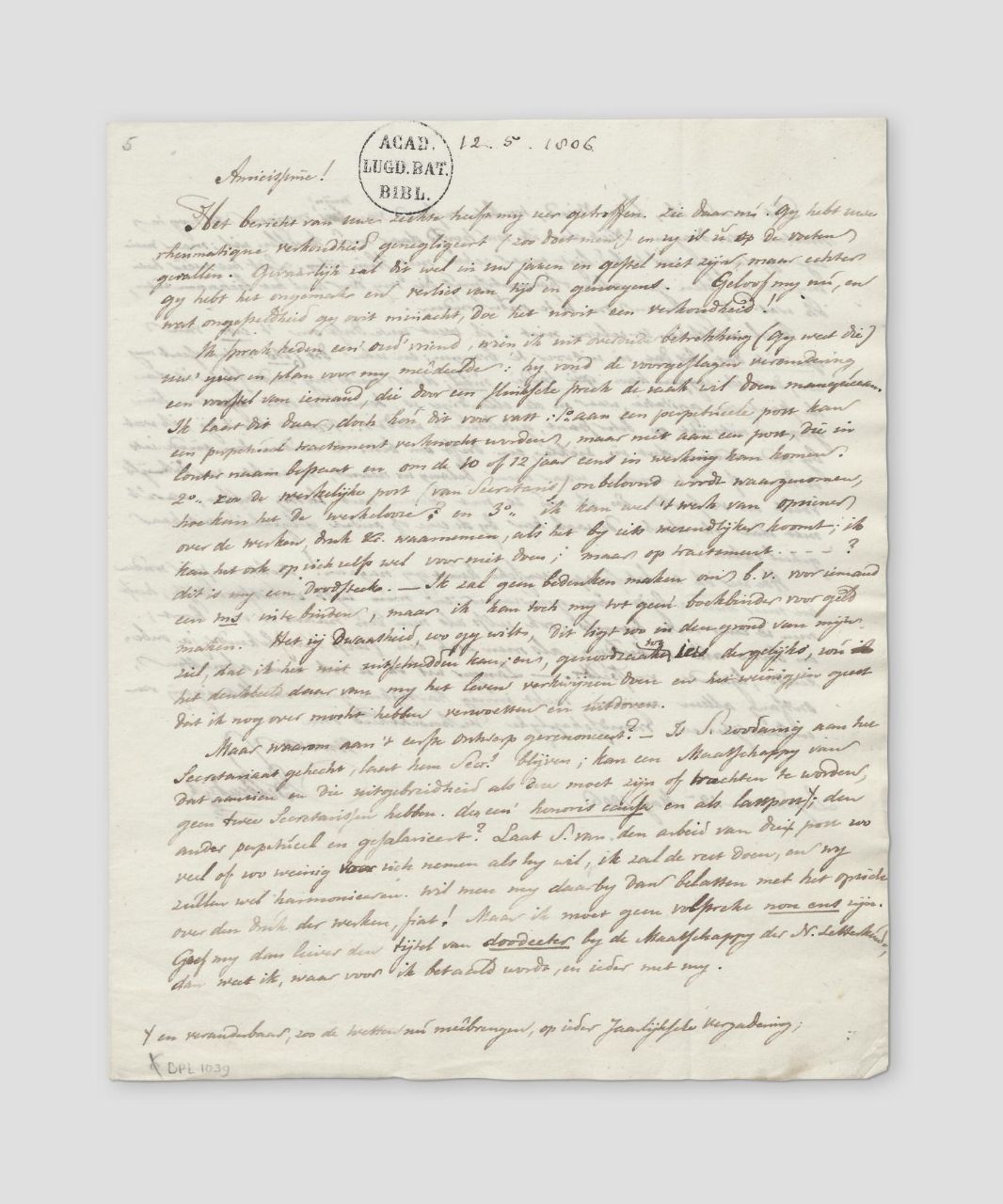Bilderdijkkamer
Een sublieme nalatenschap in Leiden
Leiden University Libraries
Welcome to the Bilderdijk Room in the Leiden Academy Building. The room is named after the poet, lawyer and versatile scholar Willem Bilderdijk (1756-1831). Bilderdijk had a special relationship with Leiden during his entire life. For him, Leiden was the ‘Eden of the World’ (‘Eden der Wareld’): the only place where he felt happy. In this exhibition, you will learn more about Bilderdijk and his legacy in the Special Collections of the Leiden University Libraries.
The Netherlands has many Bilderdijk streets, but Bilderdijk himself is barely known to the general public. By his contemporaries, however, he was seen as the most famous poet of his time.What Multatuli was to prose, Bilderdijk was to poetry. Bilderdijk was born in 1756, in Amsterdam, and died in Haarlem in 1831. People called him ‘Vondel the second’ and, despite all the differences, compared him to Goethe several times.
Bilderdijk was a homo universalis. As a poet, he left no genre or subject untouched. His collected works consist of more than a hundred volumes. No poet has sung the longing for death in so many ways as he did. If he hated something, such as German stoves or tobacco smoking, he explicitly expressed that dislike in his poetry. But in his work, he also fought against the spirit of the times, which was characterised by the influence of the Enlightenment, which was pernicious in his eyes.
Bilderdijk always had a special relationship with Leiden. He studied Law there between 1780 and 1782, witnessed the gunpowder disaster of 12 January 1807 and taught in Leiden as a private teacher between 1817 and 1827. Leiden was the only place where he felt more or less happy. He often sang the ‘Key City’ (‘Sleutelstad’, as Leiden is called) in his work and described it as a seat of learning, Holland’s fame and the flower of all cities. The fact that he was forced to say goodbye to Leiden in 1827 because he could not find a suitable home and subsequently had to move to Haarlem, made him bitter.
‘The Bilderdijk-Museum’ (‘Het Bilderdijk-Museum’) was founded in 1907 to commemorate Bilderdijk’s 150th birthday the previous year. In 2018, the organization decided to loan its collection, which was previously based at the VU University in Amsterdam, to the Maatschappij der Nederlandse Letterkunde, which already owned a collection of so-called Bilderdijkiana (Bilderdijk-related artifacts). As a result, a large Bilderdijk collection is now housed in Leiden. In addition to old books, letters and other manuscripts, the collection also consists of drawings, opium recipes, works of art and other objects. A number of masterpieces can be seen in the Bilderdijk room in the Leiden Academy Building. In this online exhibition, you will also get to see some special Bilderdijkiana from the Leiden Special Collections.
Willem Bilderdijk’s estate forms part of the collections of the Society of Dutch Literature and of the Leiden University Libraries (Universitaire Bibliotheken Leiden, UBL) and is kept in the UBL’s Special Collections. This online exhibition is an initiative of Scaliger professor Rick Honings in collaboration with Leiden University Libraries and the Things That Talk Foundation on the occasion of Bilderdijk’s 265th birthday on 7 September 2021.
Teksten: Rick Honings and Gert-Jan Johannes
Translation: Lotte van den Bosch
Readings: Peter van Zonneveld
We would like to thank: Kurt De Belder, Mart van Duijn, Guus Janssen, Kasper van Ommen en Fresco Sam-Sin
Sources
Geerts, Ton, Het Bilderdijk-Museum. Catalogus van kunstvoorwerpen. Leiden 1994.
Het Bilderdijk-Museum 1-36 (1984-2019). Te raadplegen via DBNL.
Honings, Rick, De dichter als idool. Literaire roem in de negentiende eeuw. Amsterdam 2016.
Honings, Rick & Gert-Jan Johannes, Een sublieme nalatenschap. De erfenis van Willem Bilderdijk. Leiden 2020.
Honings, Rick & Peter van Zonneveld, 'Het klapwieken van de gefnuikte arend. Een biografie van Willem Bilderdijk’, in: Biografie Bulletin 20 (2010), 44-51.
Honings, Rick & Peter van Zonneveld, De gefnuikte arend. Het leven van Willem Bilderdijk (1756-1831). Amsterdam 2013.





